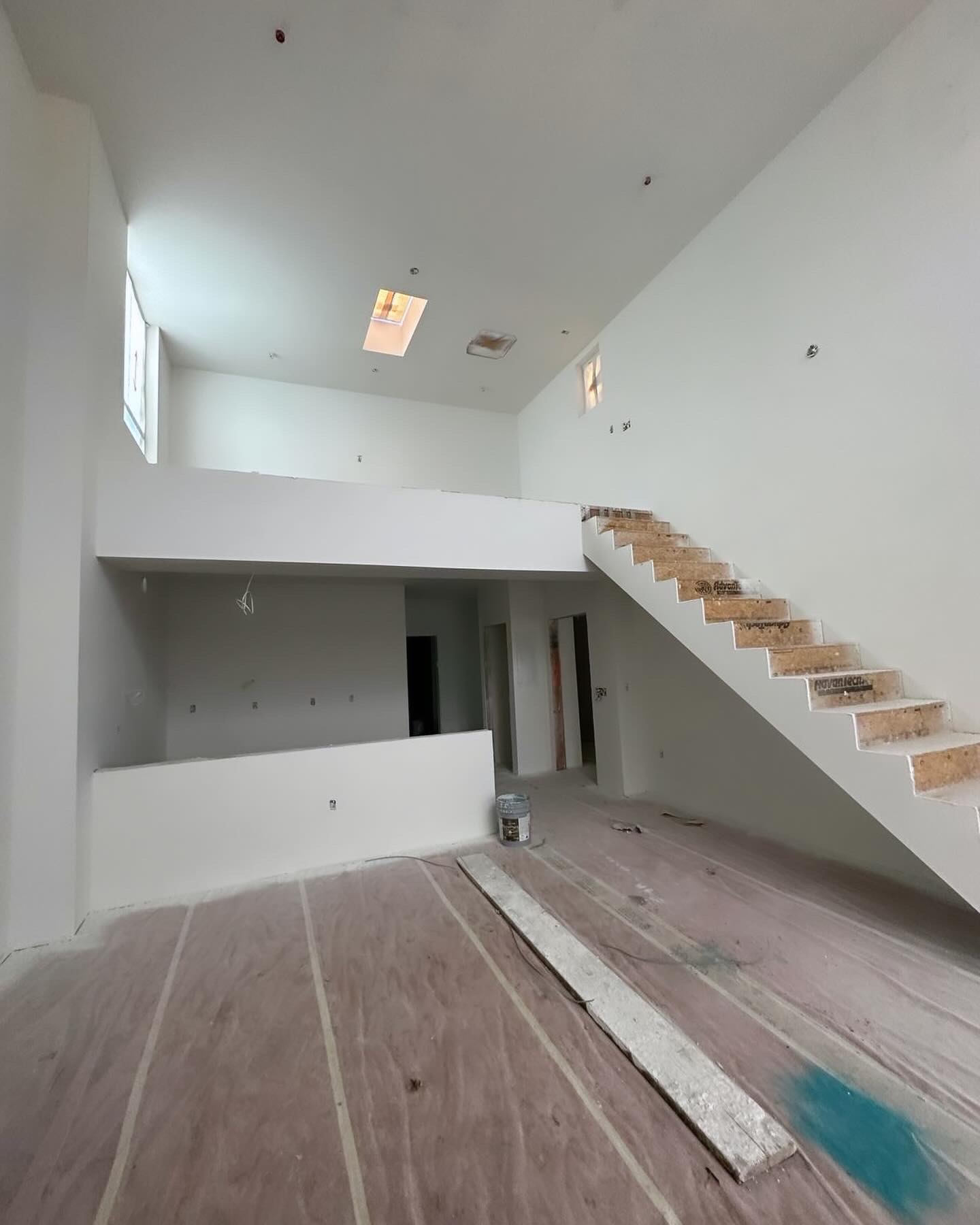Professional Drywall Contractor Services for Your Home Renovation
Professional Drywall Contractor Services for Your Home Renovation
Blog Article
Drywall Installation Made Easy: Tips for Perfect Results
Drywall installment is typically perceived as an overwhelming task, yet with the appropriate technique and understanding, it can become a workable endeavor. Grasping strategies for cutting, hanging, and ending up drywall can dramatically affect the end result.
Selecting the Right Products
Selecting the proper products for drywall installment is critical to achieving a long lasting and aesthetically pleasing surface. drywall installation. The main component, drywall sheets, usually can be found in various thicknesses, with 1/2-inch sheets being typical for interior walls. For locations calling for additional wetness resistance, such as kitchen areas or shower rooms, consider using eco-friendly board or concrete board, which are specifically designed to endure moisture

Additionally, choosing the ideal bolts-- either nails or screws-- is necessary for safeguarding the drywall to the framework. Drywall screws are normally favored for their holding power and lowered risk of popping. Consider the finishing touches such as guide and paint, which not just improve the appearance but also protect the drywall from dampness and wear.
Preparing the Setup Area
Prior to beginning the drywall installation process, it is necessary to prepare the installment area thoroughly. This prep work includes several important steps to guarantee a effective and smooth project. Initially, clear the location of any furniture, devices, or obstructions that can impede access. A tidy workspace decreases the risk of damage to existing things and enables for efficient motion during setup.
Next, check the wall surfaces and ceiling for any type of imperfections, such as fractures, openings, or mold and mildew. Address these concerns in advance; patch any problems and enable enough time for repair work to completely dry. Additionally, make sure that electric outlets, switches, and pipes are correctly placed and made up, as this will affect drywall positioning.
Consider the environmental conditions also. A steady temperature level and humidity degree are essential for ideal adhesion and performance of the drywall materials. Utilize a dehumidifier or heating system to produce appropriate conditions. if required.
Cutting and Hanging Drywall
The key to efficient drywall installation lies in the specific cutting and dangling of the panels. Begin by determining the space properly, considering any type of obstructions such as electrical outlets or home windows. Utilize a straight edge and an utility blade to rack up the drywall along your measurements, then break it along the racked up line for a tidy break. For even more detailed cuts, such as around electrical outlets, a drywall saw can be used for precision.

Always function from the top down and left to right, ensuring that you preserve a staggered pattern to enhance stability. Effectively hanging the drywall sets the structure for a smooth finish, eventually leading to premium lead to your drywall job.
Insulation and Mudding Techniques
While appropriate cutting and dangling of drywall sets the stage, the following essential action involves grasping taping and mudding strategies to ensure a seamless surface. Insulation is essential for reinforcing joints and stopping splits; it involves embedding tape into the applied joint substance (mud) Beginning with a quality fiberglass or paper tape, applying the tape over the joint and pushing it right into the wet mud using a taping knife, making sure no air bubbles continue to be.
As soon as the tape remains in place, apply a thin layer of joint compound over the tape, feathering the edges to produce a smooth shift to the drywall surface area. Permit this layer to completely dry entirely prior to sanding it lightly to eliminate blemishes. Repeat this process, using extra layers of mud as necessary-- usually 2 to 3 their explanation coats-- while slowly broadening the application location with each layer to accomplish a seamless look.
After the final coat dries out, sand the surface area with a fine-grit sandpaper till smooth. drywall installation. Bear in mind to wear a mask throughout sanding to stay clear of inhaling dirt bits. Grasping these taping and mudding methods is important for accomplishing a professional-quality surface in your drywall setup
Completing Touches for Perfection
Achieving a remarkable drywall installment goes past mudding and taping; it culminates in the finishing touches that boost the total look. These final steps are crucial in ensuring a professional-grade coating that improves the Click Here visual appeals of your space.
Begin by fining sand the dried out joint compound to develop a smooth surface area. Utilize a fine-grit sandpaper and a sanding block or pole sander for ideal control. Pay particular attention to corners and edges, as these locations often tend to require even more careful work. After fining sand, wipe down the wall surfaces with a moist cloth to get rid of any type of dust bits, guaranteeing a tidy surface for paint.
Next, use a guide specifically created for drywall. This step is necessary, as it helps seal the joint substance and offers a consistent base for the overcoat. As soon as the primer dries out, inspect for any type of blemishes, and touch up as needed.
Verdict
In conclusion, successful drywall setup pivots on the cautious option of products, detailed prep work of the installation location, and specific implementation of reducing and hanging strategies. Proficiency of taping and mudding procedures is crucial for achieving a smooth surface.
Drywall setup is commonly regarded as a daunting job, yet with the appropriate approach and expertise, it can come to be a convenient endeavor.Selecting the appropriate materials for drywall installment is critical read the full info here to attaining a sturdy and cosmetically pleasing surface.Before beginning the drywall setup process, it is important to prepare the installation location extensively. Grasping these taping and mudding techniques is crucial for achieving a professional-quality coating in your drywall installment.
In verdict, effective drywall installation pivots on the cautious selection of products, detailed prep work of the installation location, and specific implementation of cutting and hanging strategies.
Report this page